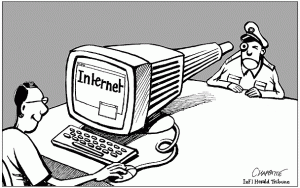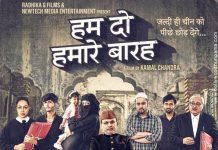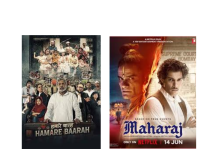With the advent of OTT platforms like Netflix, Hotstar, Amazon Prime video et all, many of us have forgotten about the traditional television channels. These platforms are slowly taking over the television audience at least in the urban sector. With more quality content available, a wide section of audience prefer to skip the saas-bahu drama the television channels offer. Most of the channels have in fact started their own OTT platforms. Having said that, those of you who have watched Game of Thrones or some of the other HBO originals on Hotstar (Westworld, Deuce, Hung, etc) or shows such as Narcos on Netflix or American Gods on Amazon Prime Video, would wonder as to for how long would such uncensored content / explicit content be allowed to be shown in India; a country where religious sentiments are easily hurt, overzealous litigants approach the court filing public interest litigations, criminal complaints for the degradation of Indian culture, defamation, obscenity, indecent representation of women, etc etc.
The Modi government has so far been silent on regulating digital content. But it is only a matter of time before our sanskari publicity mongers wake up filing cases left, right and centre. So the question is, to what extent are these OTT platforms required to self-regulate their content? Interestingly, while content of several international web-series is shown uncensored, when it comes to cinematographic films falling under the purview of the Cinematograph Act, 1952, several platforms are showing films certified by the CBFC. There are a bunch of interesting articles on this subject which can be viewed here, here and here which report the confused mindset of these digital platforms in changing their stand time and again as regards to censorship of their content.
As reported by Medianama here, in response to a RTI application, the I&B Ministry categorically said that they do not have the power to censor any content online, and that they are “not pursuing the creation of a regulatory framework” that would allow them to have any online censorship powers. In 2016 a writ petition was filed by Uncanned Media Pvt. Ltd against the I&B Ministry and others alleging that Hotstar is showing uncensored content and soft porn. The Delhi High Court had vide order dated November 11, 2016 ordered the Ministry to examine the allegations of the objectionable content being made available and accordingly take action in accordance with law. The matter subsequently progressed in another direction with some personal disputes between the petitioners and the platform owners coming into picture. The High Court vide order dated August 11, 2017 stayed some FIR filed by petitioner against officers of Star India. The matter is still sub-judice before the Delhi High Court.
The digital space is currently unregulated. In my posts here and here, I had covered the precautions to be taken while making an audio-visual content. The list of precautions included adherence to the Intermediary Guidelines, 2011, Cable Television Network Regulation Act and Rules and list of other legislations governing public policy in India.
In a public interest litigation filed by Raksha Jyoti Foundation before the Punjab & Haryana High Court against the release of the films Mastizaade and Kya Kool Hain Hum 3, the court directed the producers/directors to submit an undertaking that they would not release the excised portion of the feature/film to anyone in any medium including the internet. [Read order here]. There was an outcry in the industry on the repercussions of this order with respect to requiring trailers and other film materials to be certified by CBFC before releasing it online.
In the case of Super Cassettes Industries Limited v/s Central Board of Film Certification & Ors, the Delhi High Court dealt with the issue on whether audio-visual recordings on DVDs and VCDs which the Petitioners sell in the market, but with the label that it is meant only for private viewing, requires certification by the Central Board of Film Certification under Section 5-A of the Cinematograph Act, 1952, the Delhi High Court observed that film meant for private viewing would not be exempt from certification by CBFC and held as under:
“The mere labelling by the film maker or distributor that the film is meant for private viewing will not exempt the film from prior certification under Section 5-A CG Act. Once it leaves the shop where the film is purchased, neither the maker of the film nor its seller, has any control on whether it is viewed by one person or by a hundred, or whether it is viewed in a place to which the public is invited or in the private confines of a home. Therefore, the interpretation of the words „public exhibition‟ has to necessarily be contextual keeping in view the essential purpose of the CG Act and the insertion of Section 52A in the CR Act. In view of the amendments to the CR Act as impacting on the CG Act, what constitutes „public exhibition‟, both for the purposes of Section 52A CR Act and Section 5-A CG Act, is no longer confined to exhibition in a cinema hall. Even if there is no audience gathered to watch a film in a cinema hall but there are individuals or families watching a film in the confines of their homes, such viewers would still do it as members of the public and at the point at which they view the film that would be an „exhibition‟ of such film.”
If one were to apply the decision of the Delhi High Court in the Super Cassettes case, OTT platforms showing cinematograph films would fall under the ambit of the Cinematograph Act i.e. to say that even for films which may be under the ‘Originals’ banner of these platforms and may not have released theatrically, certification from CBFC would be required.
In my view, this would be a dangerous interpretation and open a can of worms. Even though ‘public exhibition’ has not been defined under the Cinematograph Act, 1952, the Act intends to regulate cinematographic films for public exhibition in a place licensed under Section 10 of the Act. A concerned legislation which deals with a particular platform, may require that a film shown on the platform should be certified by CBFC for public exhibition. For instance the Programme Code (Rule 6 of the Cable Television Network Rules, 1994) requires under Rule 6(o) that no film or film song or film promo or film trailer or music video or music albums or their promos, whether produced in India or abroad, shall be carried through cable service unless it has been certified by the Central Board of Film Certification (CBFC)) as suitable for unrestricted public exhibition in India. The explanation to the said proviso provides that the expression “unrestricted public exhibition” shall have the same meaning as assigned to it in the Cinematograph Act, 1952 (37 of 1952);
Therefore, the Cinematograph Act cannot regulate content on cable services or internet platforms but the concerned regulations governing these platforms can. In the absence of any such regulation, the OTT platforms still remain unregulated. Further, the OTT platforms cannot approbate and reprobate at the same time i.e. they cannot choose to show explicit content with respect to web-series but seek certification for other films not theatrically exploited. There should be uniformity in the stand taken by these platforms. However in the absence of any specific regulation and in view of judicial precedents such as the Super Cassettes one, there are bound to be myriad interpretations on what content needs to be censored.
With growing number of OTT platforms in India, there is a pressing need for clarity on content regulation in this space. Laws need to evolve with technology. Given that there are penal consequences for showing defamatory or obscene content or content hurting religious sentiments, etc, or the fear of ISPs blocking their platforms, it is likely that platform owners would eventually be bound to take a conservative approach and adopt strict self-censorship measures thereby curtailing creative freedom of expression.
Image source: here



















[…] framework” that would allow them to have any online censorship powers. I had covered a post here on content regulation on OTT […]